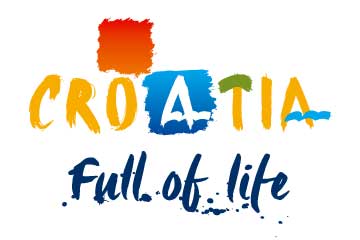Gastro history Sinj
Setting off on a 20-minute uphill journey from Split, you come to Sinj, the town of the Alka Tournament, Feast of the Assumption, the River Cetina, and the Alkar and Junak sports clubs, acres of arable land in the Sinjsko Polje Valley, and karst hills. Sinj has a traffic light and some sort of airport, so you see, you can even take a charter flight to Sinj.
Hundreds of texts and books have been written about Sinj and the entire Cetinska Krajina Region, miles of cine-film recorded, and still, there's always something to add, a sort of tiny details which some before us have skipped.
How beautiful and specific the area is people got to know a long time ago, even the old Romans did. At Čitluk, a village at the northern town gates, they founded the colony of Colonia Claudia Aequum, and you know that the old Romans built towns and walls in a planned and organised way. Water, soil, sewage system, the wind... and so on, they calculated it all.
What a pleasant place to live! Some remains of villas rusticas and tombstones were also found, as proof of the fact that Roman legionaries enjoyed their retirement in and around Sinj after they had conquered the whole world known by that time.
And then a big bang came about, there was a blackout, everything was plunged into darkness, Rome went bankrupt, the time had stopped, some new barbaric people from the north came, they became domesticated and put land register in order and then decided they would never again be driven off from their plots.
These people kept their promise, the region's entire history was marked by wars, earth was soaked in blood, the shadows of men and their steps were almost a rarity, so folks, don't wonder at great pride of local people!
I'll stick to history a little more. This time travel writers from the 17th and the 18th centuries have their turn.
The first one is the Italian monk, biologist, geologist and travel writer Alberto Fortis. In case you're interested in Dalmatia and its history, get yourself this book, it will help you a lot. Today when we're connected in all possible ways, just imagine how he felt riding a horse along overgrown Roman roads and bare karst, he almost cried when he looked in the direction of the sea and islands, civilisation... thinking he would never come back again. The journey itself turned out to be better than he could ever imagine. If we pay no attention to the technical parts of the book, we'll notice that a great deal of the text is about spiza, or food, things to eat and drink.
Indeed, food and what people used to eat and drink was supposed to be the subject of this piece of writing, but I got a bit carried away, I mean you can't go to the kitchen right away. First we need to get familiar with some basic stuff, a bit of culture and a fragment of history.
So the first gastro Robinson was an Italian guy.
Of all things he liked most milk, prepared in all manner of ways. Kiselina, or home-made yoghurt, cream, butter, all kinds of cheese, sheep's milk cheese, cows' milk cheese and goats' milk cheese, he got so potty about the Meggle's ancestors that he used to finish almost all of his works writing about food and how the hosts are nice and how they eat good and healthy food. Of course, there're no light products, kefir or soya milk, but, dear folks, if you sniff out a little in peškarija and pazar, market-places in Sinj and Split, you'll see that there you can find exactly such kind of product.
Isn't cheese in mišina (washed sheepskin in which cheese is preserved with brine) a big hit today?
And not to mention roast meat? Lamb, turkey meat, venison?
All of this our Italian guy tasted, for now I've only followed him, I've got to, so as not to skip something by accident, well I still haven't tasted spit-roasted lamb in the outdoors, served on pogača, brown unleavened round wheat bread, now better known as Vrlička pogača (pogača typical of the town of Vrlika in the Dalmatian hinterland).
Well who knows, I might get lucky one day.
So as not to hurt veggies' feelings, it needs to be said, these folk used to gulp tons of shallot, red onion and garlic, nowadays you might say, ″chew Orbit gum after every meal…blah blah blah″.
Time flies, and one day in the year 1838 Sinj saw the certain crowned head. Bored with the sea and islands, he wanted to see what was there beyond the hills. His name was Frederick, King of Saxony. The King's attendant kept a diary, translated by our Ivan Mažuranić. Things would have all been shipshape, starting with the Alka, the neat and tidy little town itself, its lovely houses and gardens, polite hosts and marvellous food if on the menu there hadn't been – ice cream.
This kind of sweet food was brought to Sinj by Venetian soldiers, originally coming from Switzerland – the Trek family. How much folk were thrilled with ice cream shows this sentence: ″It would not disgrace even the Tomaso coffee house in Trieste!″
This extract from the diary simply shows that Sinj and the entire Cetinska Krajina Region were to wake up after centuries of wars and to actively take part in modern times that were about to come, but it also presents the region as a great blend of the Mediterranean and the continent, the West and the Orient, especially when talking about cuisine.
It's true enough that there's no such thing as ″Sinj cuisine″. It's also true that all of Croatian cookbooks contain recipes ending in ″à la Sinj″.
And I know that you've heard that the arambaši of Sinj (rolls of pickled cabbage leaves stuffed with chopped meat) are protected as part of intangible cultural heritage?
Is that right?
Maybe the best thing you can do is to travel up or down to Sinj. Restaurants are easy to find, I won't promote them for now, but I only need to tell you, these folk keep a good table and are hearty eaters!
Sure enough, here people still value highly the four seasons, or stađuni, and seasonal food, so don't worry, there isn't any industry here, but only fresh and pure air, lush scenery, the water in rivers and lakes is cold and drinkable and rich in fish. There're no GM meat or greens here, and it doesn't take a lot for you to get used to wine, it's a bit strong and dry, wines here are home-made.
Forget about heartburn as well, 'cause you'll have a home-made walnut grappa, or orahovica!
Mario Despotović










